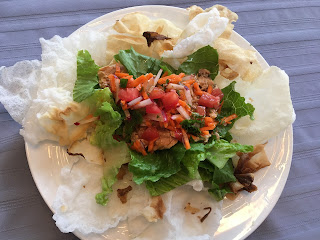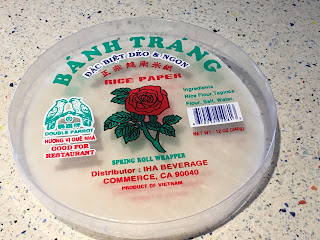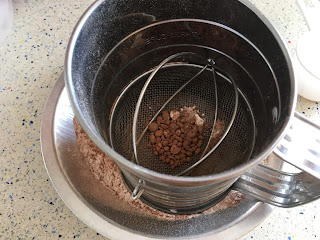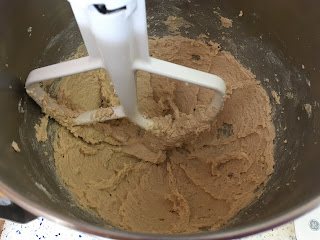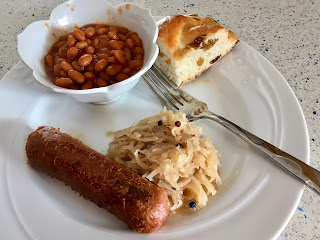I put up far more this year than I ever have in my life, thanks to the new canning pot and Sure Jel for pie fillings. I don't regret any of it, and there isn't anything that I would not make again, but maybe I won't do it in such quantities next time.
I'm making a distinct effort to use everything I canned. There's no point in just looking at how pretty they are, all lined up. I do use jams frequently, both on toast and stirred into plain yogurt. I opened a pineapple jam for the first time in months and couldn't believe how good it is. Pickled veggies like season-end artichokes end up in salads or over pasta, so that's all gone. It's the sauerkraut and kohlrabi relish I've been struggling to use. Both are best with red meat, and I've been eating much less of that than in the past.
I was hoping Blogger had a spreadsheet tool for posting this year's canning output. The most interesting feature I found was that you can call up a virtual keyboard for alternate languages. Played with the Hebrew one a bit, then gave up looking for the spreadsheet. I'll try to create a logical formatting the old-fashioned way, by changing to a non-justified font. I did grow up when the Commodore 64 was one of the coolest home computers.
Product Date Amount Made Amount Remaining
That took a lot longer than I expected.
Ok, that was even more jars than I thought. Twenty individual products? My inventory sheets are by type of preserve: Pickles/Relish/Salsa, Fruit & Pie, Jams & Butters, and Condiments. Breaking it up looks shorter than all in a row.
You can also see that I've used quite a bit. Several items are gone, while others are close to it. I didn't can anything in March, August, September, or December. I've actually opened a few jars between taking the photos and writing the chart.
What this chart-ish tells me is that I shouldn't make so much in general, but especially not items that are primarily for meat dishes. And I'm not using as much mustard and ketchup as I thought I did, probably because of the less meat thing. The pie filling usage is about what I was expecting: not frequent, but a good enough pace to use it in a year.
So what's my canning plan for next year? First, I'm not canning anything until I need it. I still have about six months of jams at the current rate, and that's the main thing I like to have. I do still have a few things tabbed that I want to try, like fruit cocktail, but those are going to wait until similar items are gone. Part of "Cooking for the Future" is making sure you can use everything before it goes bad. Otherwise, it's just a waste of money and your hard work.










